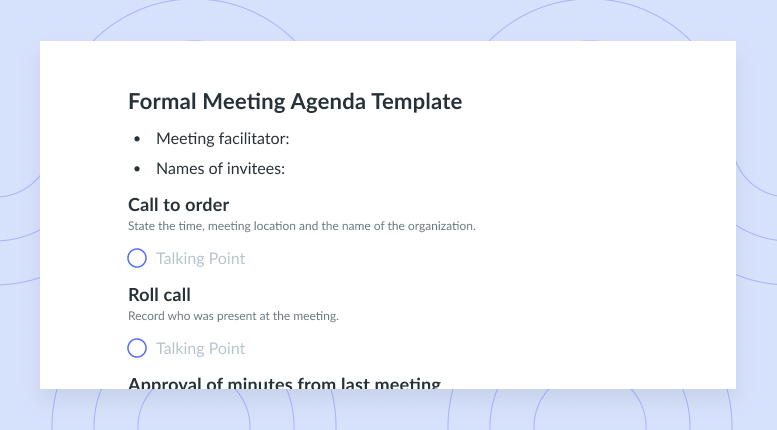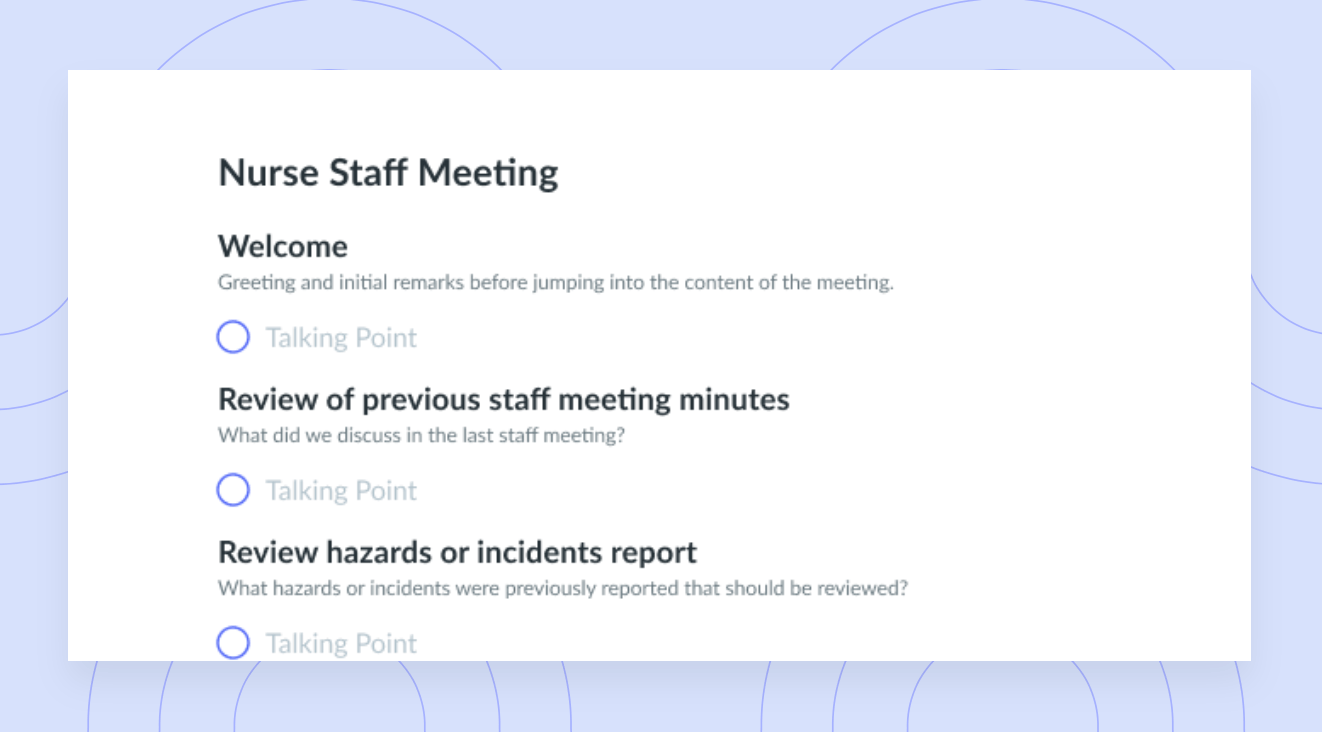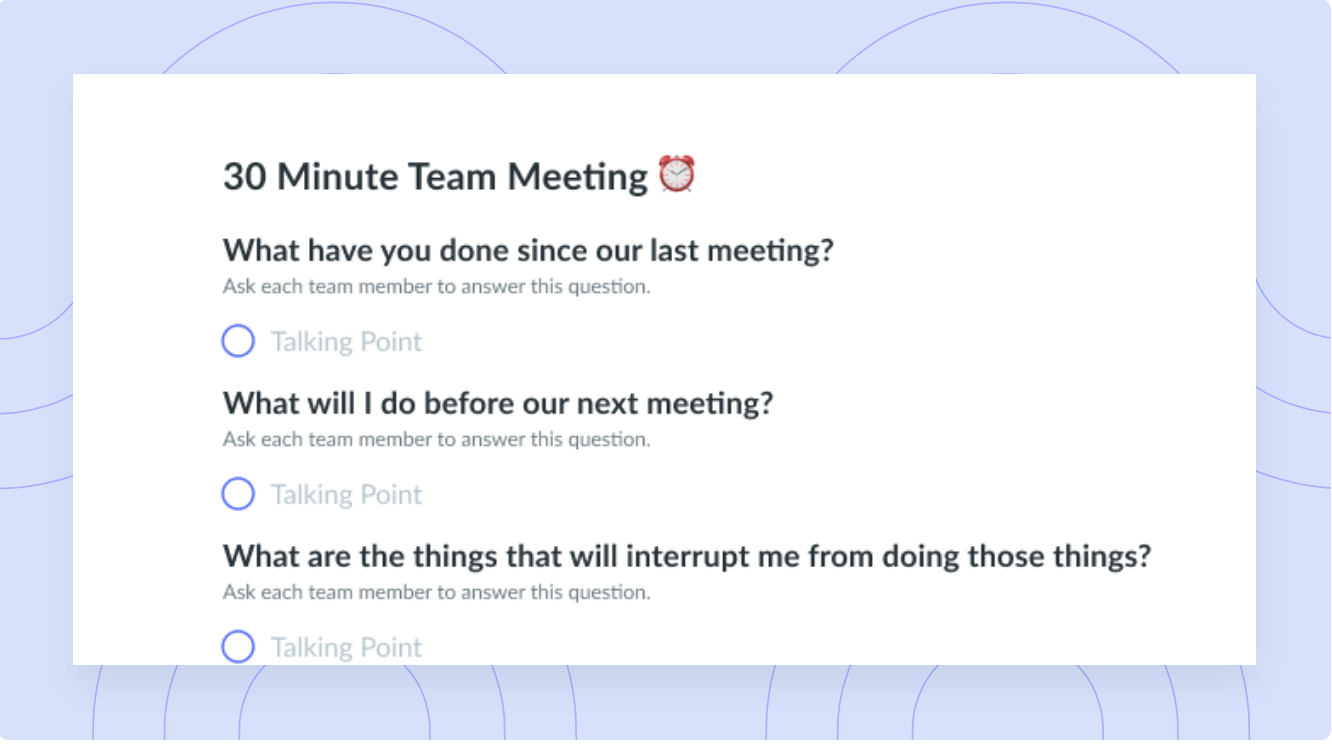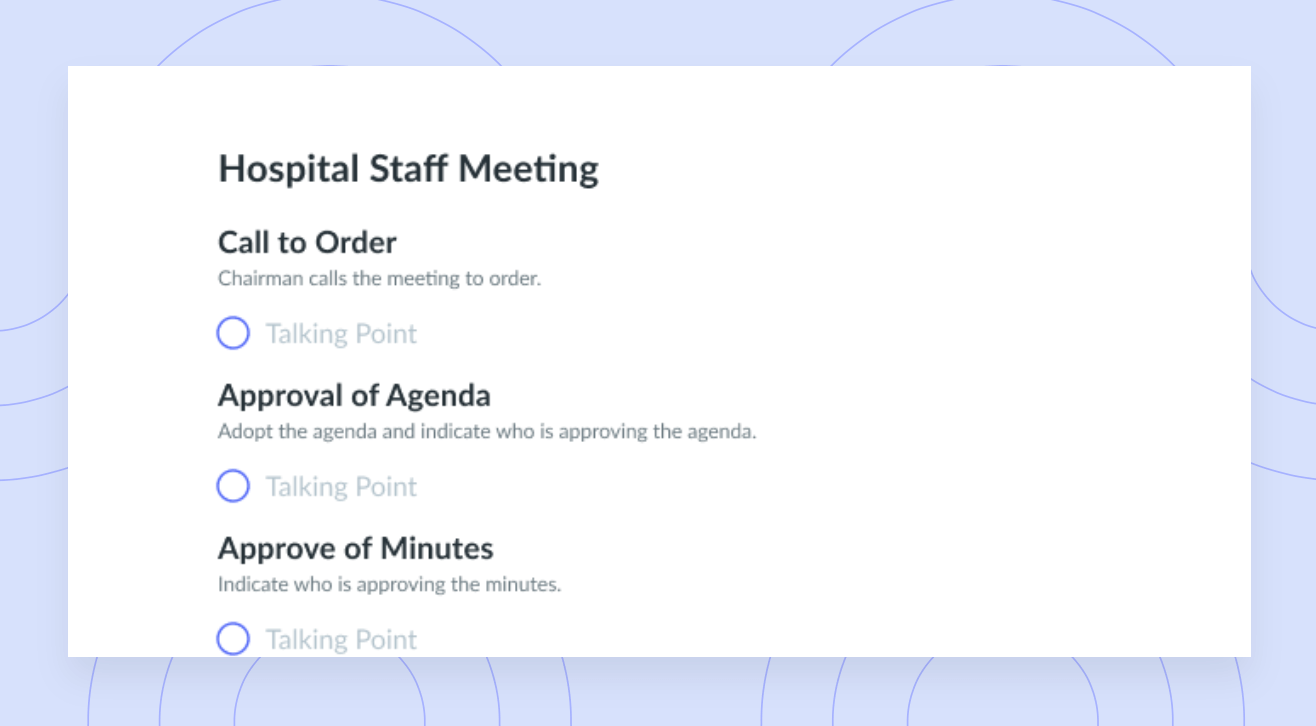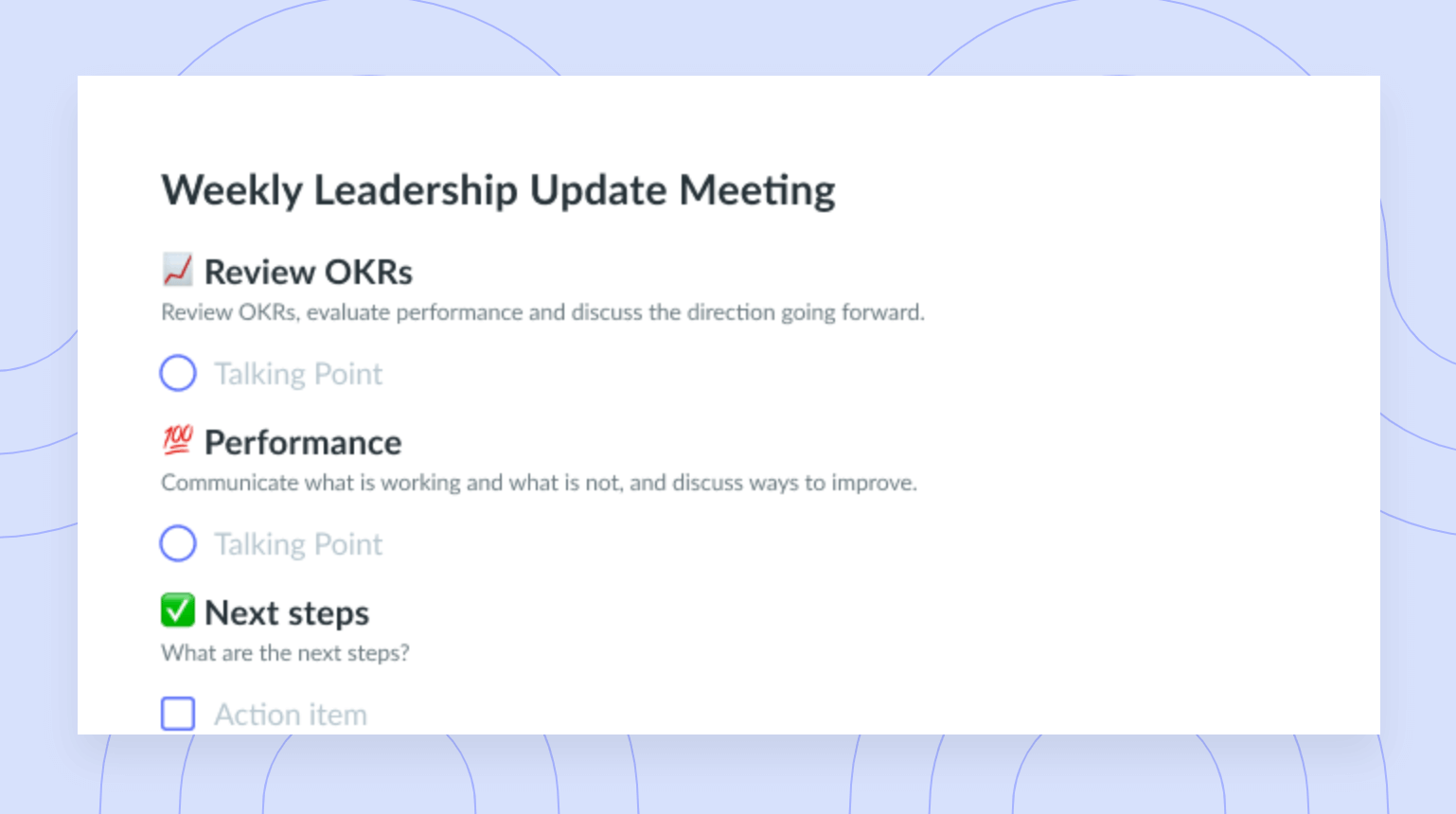How to Communicate Budget Cuts to Staff in 2024
Find out how you can communicate budget cuts with your team in a way that builds trust and keeps morale high.
In tough times, executives and leadership at all levels have to break the bad news to employees. And if you stay in business long enough, budget cuts are inevitable.
Learning how to communicate budget cuts to staff is a skill all leaders should have. Some of your staff need to be let down gently if they’re being laid off. And if their jobs are safe, you need to tell them their jobs might get harder while keeping morale high. But how?
- Why you should communicate budget cuts to your staff
- 10 ways to communicate budget cuts to your staff
- Free budget meeting templates
Why you should communicate budget cuts to your staff
Open communication is essential to a healthy business culture, and it’s even more important to get the company through a tough financial situation.
If employees aren’t kept in the loop about budget cuts, they’ll start to worry their department will be short-changed or that their jobs are on the line. This fear decreases morale, which can lead to higher employee turnover.
In contrast, good communication around budget cuts can have several positive benefits for the company. A focus on trust, openness, and support can bring teams together in hard times and see them coming out stronger than before, which is why effective communication is crucial.

Foster effective meeting communication
A well-run meeting can foster communication and collaboration by including an agenda the whole team can contribute to. Try using a tool like Fellow!
10 ways to communicate budget cuts to your staff
With the above in mind, let’s go over 10 ways to communicate budget cuts to your team effectively.
- Be transparent
- Provide accurate facts
- Record the conversation
- Remain calm
- Take care of your well-being
- Highlight the benefits of budget cuts
- Involve your team and stakeholders
- Keep communication open
- Assign a point of contact
- Manage expectations
1Be transparent
Transparency is essential to staff communication. When quarterly plans show a budget reduction on the horizon, it’s easy for management to worry that talking about financial difficulties might result in staff polishing their CVs.
However, being open and honest about the situation will help prevent rumors and speculation from spreading, especially if you have numerous teams in different locations. If you know budget cuts have to be made, bring it up with your team members as soon as possible.
Being transparent when it comes to the company’s budget gives you time to work together on potential solutions. By giving staff more awareness of and involvement in the process, you’ll be providing them with ways to deal with the situation other than worrying about layoffs.
2Provide accurate facts
Another way to involve team members is by letting them see the numbers firsthand. This not only justifies your decisions but also reassures staff that their personal performance isn’t to blame.
Reliable small business accounting software can be a great help here. You can use this software to create reports and access location-specific figures, which will help support and explain the decisions being made.
For example, by showing your London-based team how you’ve considered all your costs—from your tax contributions to your pension schemes—you’ll garner trust and understanding.
3Record the conversation
To mitigate potential disputes related to budget cuts, consider recording formal discussions on a device or in your video meeting software. These records safeguard against misinterpretations that could escalate to internal disagreements, negative publicity, or even legal action.
With the meeting attendees permission, by keeping a record of the conversation, businesses can keep the record straight in internal discussions and potential legal disputes. You could also consider taking collaborative meeting notes, which will help promote transparency and accuracy by maintaining a single source of truth when it comes to what was discussed during the conversation.
With Fellow, you can stay present with AI meeting transcription and keep an accurate record of discussions and decisions with AI meeting summaries. Fellow’s AI meeting assistant takes care of recording and transcribing meetings so participants can stay focused and engaged in the discussion. Plus, AI meeting summaries, paired with recordings and full AI meeting transcriptions, are all in one place to keep all stakeholders in the loop, even when they’re not in the meeting. Fellow is a central repository for all meeting records so everyone is aligned and follow-ups are clear.

4Remain calm
Budget cuts could indicate anything from a challenging market to impending bankruptcy. Whatever you tell your team, they’ll be picking up on other signals, such as your voice and non-verbal cues like body language.
As such, managers have to do what they can to remain calm in these conversations, whether this entails workshopping the conversations with another manager or preparing everything they need to say in collaborative meeting notes.
5Take care of your well-being
An organization facing financial worries can be stressful for everyone, and as a manager, it’s your job to look out for your team. However, you can only do this effectively if you’re also taking care of your own well-being.
Prioritizing your well-being will put you in a better position to act as a source of reassurance for your team; it will also ensure you have everything you need to meet the challenges ahead.
6Highlight the benefits of budget cuts
Not all budget cuts are bad things. When looking to communicate budget cuts to staff, highlight potential benefits whenever possible.
Maybe you’re planning to move resources to an area that will bring in more revenue or maybe some of these cuts have led to new innovations. For example, by switching to accounting software that has an accounting app for Android, you’ve made your invoicing system more efficient and accessible from wherever your team is based, whether that’s in Berlin or New York.
Highlighting these silver linings and bringing the conversation back to how certain budget cuts can benefit the team will prevent updates that are all doom and gloom. Across the company, this will help keep morale as high as possible while the company is in a rough patch.
7Involve your team and stakeholders
When the business is going through a hard time, one of the worst parts is a feeling of powerlessness among staff and other stakeholders
By keeping communication open and inclusive, managers can give staff a feeling of autonomy over the future of their department and the business as a whole.
On top of this, by involving team leaders, you can get ideas and input from those who know your staff best, as well as a better understanding of each team’s position. This is particularly crucial if your business is dispersed across different locations, making it difficult to be fully informed about everyone’s position.
8Keep communication open
One of the most important things that you can do for your team members at this time is to create a sense of security. You can make your regular one-on-one meetings a place for open communication, where team members should feel free to raise any questions or concerns.
By creating a sense of transparency, respect, and inclusion, you can make your direct reports feel like they have some degree of control over what’s happening in their job, which in turn helps keep morale from dropping.
9Assign a point of contact
At a time when so much in the business is changing, staff communication across the company is essential. You’re the first point of contact for budget concerns among your direct reports, but it might be useful to have people act as points of contact for the whole department or company.
If individuals are invited to talk to this point of contact—whether it’s you or someone else you’ve designated—for accurate information in confidence, this reassures staff that they can get what they need and lets management know that there’s a single source of truth for updates on what’s happening and when.
10Manage expectations
Just mentioning budget cuts can cause anxiety within the company. You want to reassure teams that the business will get through the financial troubles, but setting unrealistic expectations early on can make you less credible as the difficulties persist.
By giving your team an honest assessment of where the company is at and what measures might be taken, you can start creating the sense of transparency and open communication that you’ll need to rely on later.
Free budget meeting templates
Parting advice
By creating an atmosphere of transparency, collaboration, and resiliency, you can make sure the team comes out of this time stronger than they went in. All this begins with better communication, which is why managers trust Fellow to make sure that every conversation is as effective as it can be. Want to see what all the fuss is about? Why not try it out for yourself? It’s free!

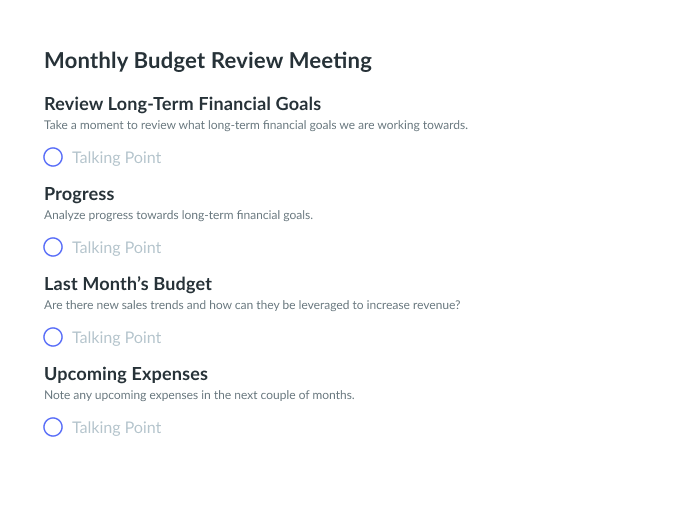










![Incoming Client Interview [Legal Clinic] Template](https://fellow.app/wp-content/uploads/2021/09/Incoming-Client-Interview-Legal-Clinic-preview.png)


